In 2025, using key business tools will be very important. Small businesses need them to succeed in tough competition. These tools make work easier, save time, and help grow. For example, project management tools help 59% of people finish on time. CRM systems help 61% of businesses keep their customers. AI and digital changes show why automation is needed. Automation can make work 40% faster and lower costs by 30%. By using the right tools, you can work smarter and succeed for a long time.

Key Takeaways on Business Tools
- Project and Team Management: Tools like Trello, Asana, Slack, and Microsoft Teams keep projects organized and enhance team communication.
- Efficiency and Marketing: Time trackers like Toggl and Clockify optimize productivity, while Hootsuite and Mailchimp boost online visibility and sales.
- Finance and HR Solutions: Apps like QuickBooks and Expensify simplify financial management, and BambooHR and Gusto streamline hiring and payroll processes.
Operational and Financial Business Tools for Small Businesses
1. Productivity Business Tools for Small Businesses

Project Management Tools
Trello
Trello makes managing projects simple with boards, lists, and cards. It helps you organize tasks visually and track progress live. You can assign tasks and create workflows easily. Its drag-and-drop feature is user-friendly and needs no tech skills. Trello helps you focus on important tasks and meet deadlines. For small businesses, it reduces confusion and improves teamwork.
Asana
Asana is great for organizing and managing projects. It breaks big tasks into smaller, doable steps. You can set deadlines, assign tasks, and track progress on its dashboard. The timeline view shows project schedules clearly, helping you stay on track. Small businesses use Asana to simplify work and avoid mistakes. It’s one of the top tools for project management.
| KPI | Description |
|---|---|
| Survey Score or Feedback Score | Tracks how happy users are with project results. |
| Net Promoter Score (NPS) | Shows if customers will recommend your services. |
| Number Of Errors | Counts task mistakes that affect time and money. |
| Customer Complaints | Checks how unhappy stakeholders are. |
| Employee Churn Rate | Measures team stability and management issues. |
| Average Cost Per Hour | Looks at how much labor costs per hour. |
| Resource Profitability | Compares money earned to resource costs. |
| Number Of Project Milestones Completed On Time With Sign Off | Tracks how well projects meet deadlines. |
Collaboration Tools
Slack
Slack changes how teams talk and work together. It organizes chats into channels for specific topics. You can share files, add apps, and tag teammates to get their attention. Slack lets you brainstorm, edit ideas, and make decisions fast. For small businesses, it improves communication and speeds up tasks.
Microsoft Teams
Microsoft Teams combines chat, video calls, and file sharing in one place. You can hold meetings, work on files together, and manage tasks. Its co-editing feature lets teams update files live, keeping everyone aligned. Small businesses use it to improve teamwork and organize tasks better. It’s a must-have tool for small businesses.
| Feature | Description |
|---|---|
| Co-authoring | Work with your team to edit content like emails or posts. |
| Organized brainstorming | Use lists to share and organize ideas with your team. |
| Real-time collaboration | See and make changes instantly in chats or tables. |
| Efficient task management | Assign tasks with deadlines and notify team members. |
| Focused discussions | Stay on topic in chat threads for quick decisions. |
Time Management Tools
Toggl
Toggl tracks how much time you spend on tasks. Its easy-to-use timer starts and stops with one click. You can review time logs to find and fix wasted time. Toggl’s reports show how your team uses time, helping you save hours. For small businesses, it boosts productivity and ensures time is used wisely.
Clockify
Clockify is a free tool for tracking work hours and projects. You can make timesheets, track billable hours, and create reports. It works with other business tools, making it flexible and useful. Clockify helps you avoid distractions and focus on important tasks, saving time and money.
| Statistic | Value |
|---|---|
| Employees can waste up to two hours daily at work | 2 hours |
| Workers spend 51% of their day on low-value tasks | 51% |
| Time management can help reclaim 20% of work hours | 20% |
| 82% of people don’t use a time management system | 82% |
| U.S. businesses lose $588 billion yearly due to distractions | $588 billion |
2. Finance Business Tools for Small Businesses
Managing money well is key for small businesses to grow. Using the right finance tools makes hard tasks simple and saves time. These tools help you stay organized, avoid mistakes, and make smart money decisions.
Accounting and Bookkeeping Tools
QuickBooks
QuickBooks is a popular tool for small business accounting. It tracks income, spending, and invoices all in one place. You can create reports, handle payroll, and get ready for taxes. Its simple design helps you manage cash flow and follow tax rules easily.
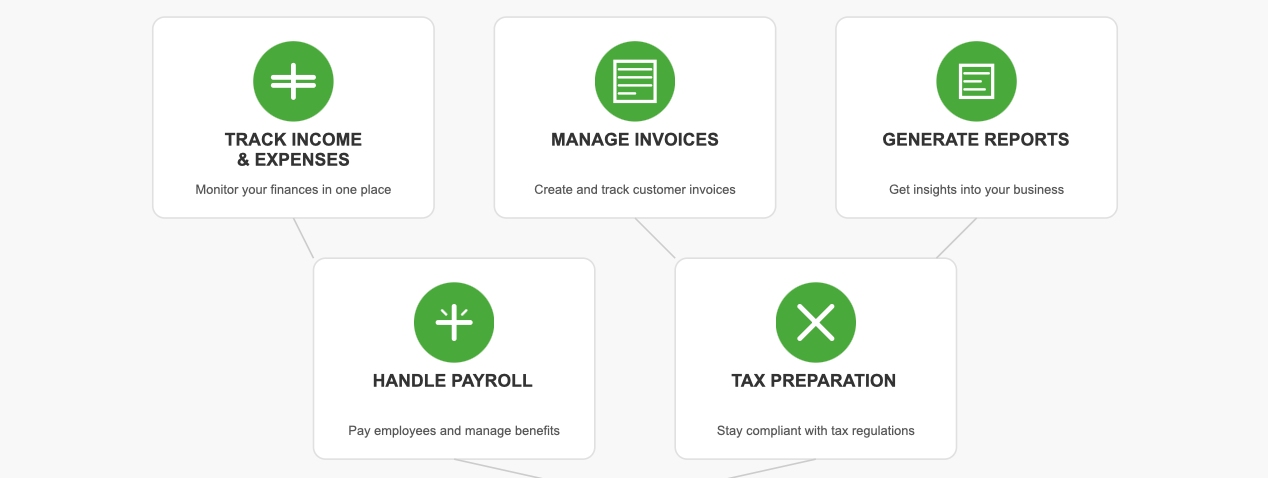
Why use QuickBooks for accounting:
- It lowers mistakes in math, giving accurate money records.
- It keeps balances correct, which helps during tax time.
- It boosts efficiency, so you need fewer workers and save money.
Xero
Xero is another great tool for small businesses. It tracks bank transactions, expenses, and invoices. You can use it anywhere, which is helpful for remote teams. Xero works with other tools, making it even more useful. With Xero, bookkeeping becomes easier, so you can focus on growing your business.
Expense Tracking Tools
Expensify
Expensify makes tracking expenses simple. You can scan receipts, sort expenses, and create reports quickly. It automates expense management, saving you lots of time. Expensify also keeps finances clear, which builds trust with others.
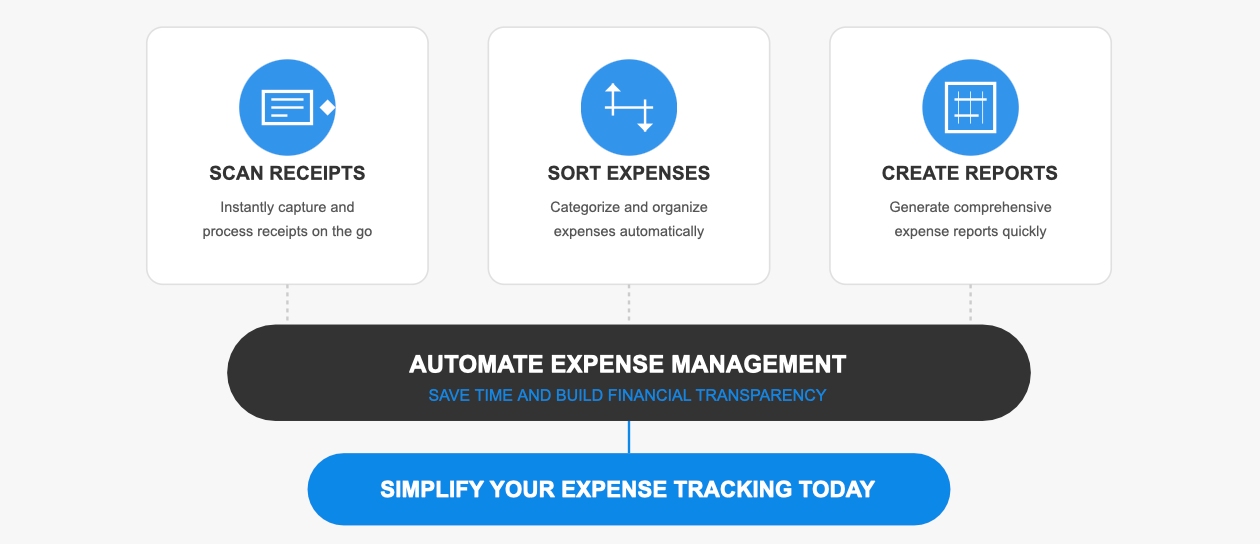
Zoho Expense
Zoho Expense is great for managing business costs. It lets you make reports, set limits, and track reimbursements. It works with other finance tools, making it a complete solution. Zoho Expense helps you control spending and manage budgets better.
| Benefit | Description |
|---|---|
| Tax Preparation | Makes sorting receipts faster and tax deductions easier. |
| Accurate Tax Filing | Helps file taxes correctly and simplifies audits. |
| Financial Awareness | Shows monthly spending clearly for better budgeting. |
Payment Processing Tools
PayPal
PayPal is a trusted tool for handling payments. It lets you send and receive money safely. You can set up repeat payments and handle different currencies. PayPal is easy to use and works worldwide, making it great for online payments.
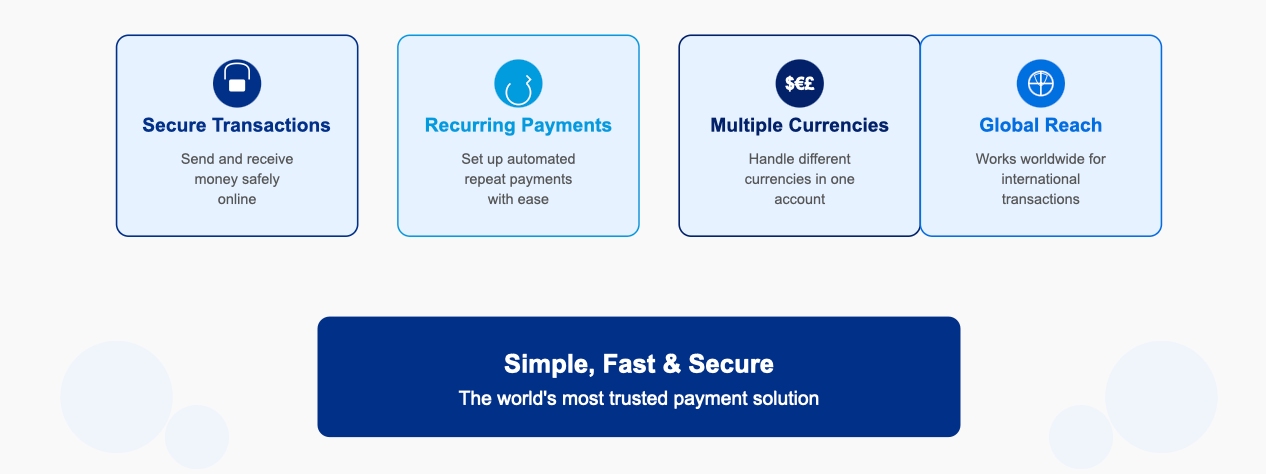
Stripe
Stripe is another excellent payment tool. It handles card payments, subscriptions, and detects fraud using AI. Stripe connects well with online stores, making it perfect for selling products. With Stripe, you can give customers a smooth payment experience.
Tip: Use tools like PayPal and Stripe to make payments easier and keep customers happy.
Finance tools are important for keeping small businesses financially healthy. They save time, improve accuracy, and make work easier. By using the best tools for accounting, tracking expenses, and processing payments, you can stay organized and grow your business.
3. HR and Team Management Business Tools for Small Businesses

Managing your team well is key for small business success. HR tools make hiring, payroll, and employee engagement easier. These tools save time, cut mistakes, and improve team performance.
Recruitment and Hiring Tools
LinkedIn Recruiter
LinkedIn Recruiter helps you find skilled workers fast. It connects you to many professionals based on skills and location. You can send custom messages and track replies easily. This tool speeds up hiring, saving money and filling jobs quickly.
| Source | Evidence |
|---|---|
| Deloitte's Recruitment Efficiency Report (2024) | Open jobs cost $500 daily, especially in tech roles. |
| LinkedIn Global Hiring Trends Report (2024) | 68% of recruiters value time-to-hire as a key metric. |
| Burning Glass Institute's Hiring Efficiency Study (2024) | Skills-based tools cut hiring time by 25% on average. |
BambooHR
BambooHR makes hiring simple for small businesses. It organizes resumes, tracks candidates, and schedules interviews. Its easy design means no tech skills are needed. BambooHR also gives reports to help improve your hiring process.
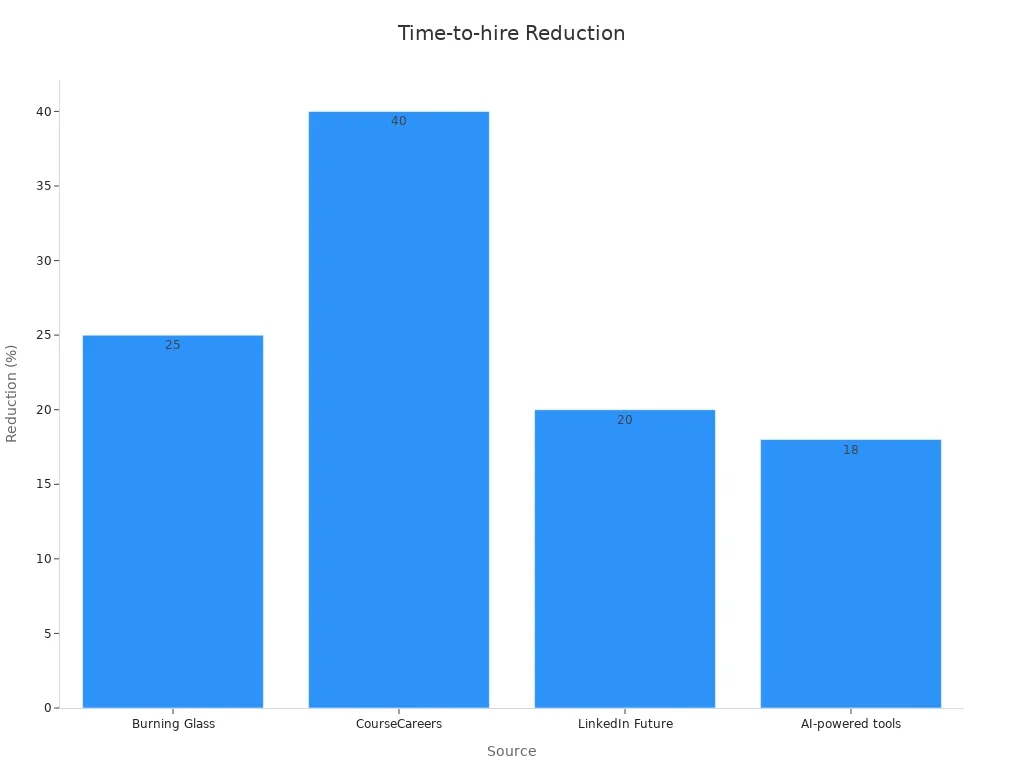
Employee Engagement Tools
Officevibe
Officevibe helps you keep employees happy. It collects feedback to show how your team feels. Use its surveys to fix problems and create a better workplace. Happy employees work harder and stay longer, helping your business grow.
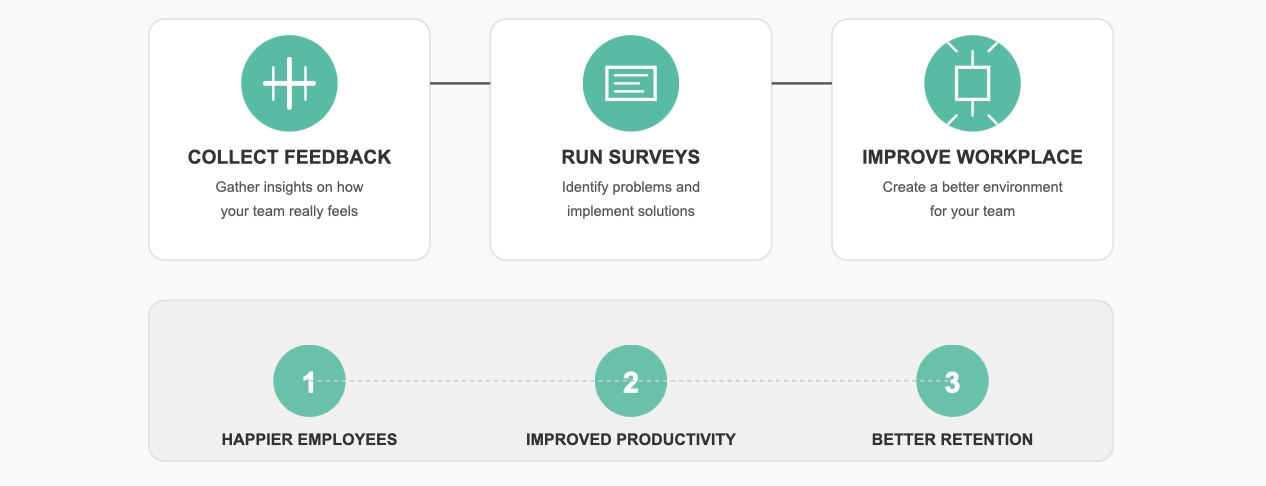
15Five
15Five helps teams set goals and share updates weekly. It allows employees to get feedback and track progress. This tool improves communication and keeps everyone motivated. With 15Five, you can build a strong and focused team.
Why employee engagement matters:
- 38% of users felt happier using HR tools.
- 22% saw better team retention with these tools.
Payroll Management Tools
Gusto
Gusto makes payroll easy for small businesses. It calculates pay, handles taxes, and sends paychecks automatically. Gusto also manages benefits and ensures everything is accurate. This saves time so you can focus on growing your business.
| Metric | Description |
|---|---|
| Accuracy Rate | Tracks payroll mistakes to lower costs and improve data. |
| Time to Run Payroll | Measures how long payroll takes, helping find faster methods. |
ADP
ADP is another great payroll tool. It files taxes, offers direct deposit, and has self-service portals for employees. ADP grows with your business and reduces admin work. It ensures payroll follows labor laws and saves time.
Note: 69% of users said HR tools made payroll faster.
HR tools improve how small businesses manage their teams. They save time, boost employee happiness, and simplify hard tasks. Using these tools helps create a productive and loyal workforce.
4.E-commerce and Sales Business Tools for Small Businesses

Selling online is now a must for small businesses. About 65% of small businesses expect more online sales in 2024. Using the right tools helps you stay ahead. These tools manage stores, automate sales, and track inventory. They make work easier and help businesses grow.
E-commerce Platforms
Shopify
Shopify is a top choice for online stores. It’s easy to use, even without tech skills. You can set up a store, add items, and start selling fast. Shopify includes payment options, shipping tools, and marketing features. Its dashboard shows sales and customer habits. This helps you improve your business plans. Shopify handles the hard parts, so you can focus on growing your store.
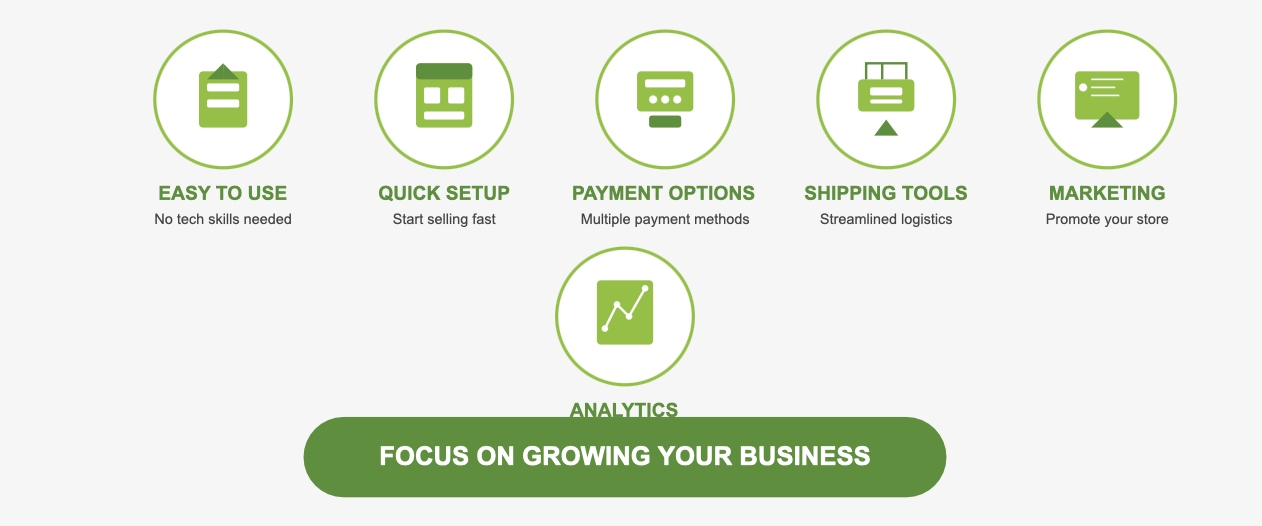
WooCommerce
WooCommerce works with WordPress to create online stores. It’s great if you already use WordPress. WooCommerce supports many payment methods and shipping options. You can add plugins for SEO, marketing, and inventory tracking. It lets you design and control your store fully. WooCommerce is perfect for businesses wanting more customization.
Tip: Pick a platform that fits your skills and needs. Shopify is simple, while WooCommerce offers more control.
Sales Automation Tools
Pipedrive
Pipedrive helps you organize and speed up sales tasks. It tracks leads, deals, and automates follow-ups. Its visual pipeline shows deal progress clearly. This helps you focus on important tasks. Pipedrive connects with other tools for smooth workflows. By automating reminders and tasks, it saves time and boosts productivity.
Zoho CRM
Zoho CRM helps manage customers and track sales. Its AI assistant, Zia, gives tips to improve sales. You can automate emails and score leads easily. Zoho CRM is simple to use and budget-friendly. It’s a great tool for small businesses to improve sales efforts.

Inventory Management Tools
TradeGecko
TradeGecko, now QuickBooks Commerce, makes inventory tracking simple. It updates stock levels in real-time and manages orders. This prevents running out of items or overstocking. TradeGecko works with platforms like Shopify, keeping everything in one place.
Cin7
Cin7 is a smart tool for managing inventory. It helps with multi-channel selling and warehouse tracking. It also predicts demand to avoid mistakes. For example, too much stock can waste money. Cin7’s reports give insights to improve decisions and save costs.
Note: Inventory tools stop stock problems and save money by reducing waste.
E-commerce and sales tools are essential for small businesses. They simplify hard tasks and improve efficiency. By picking the right platforms and tools, you can grow your business successfully.
Customer-Focused and Technology-Driven Business Tools for Small Businesses
1. Marketing Business Tools for Small Businesses
Small businesses need marketing tools to succeed online. These tools help save time, connect with customers, and work better. Whether posting on social media, sending emails, or improving your website, the right tools can make a big impact.
Social Media Management Tools
Hootsuite
Hootsuite helps you manage many social media accounts easily. You can plan posts, check likes and comments, and see how posts perform. It keeps your posts regular, so followers stay interested. You can also reply to mentions quickly, building trust with your audience.
Tip: Use Hootsuite's reports to find your best posts and improve your plan.
Buffer
Buffer is another great tool for social media management. It lets you schedule posts for platforms like Facebook and Instagram. Over 140,000 small businesses use Buffer every month. Its simple design makes it easy to create fun posts and stay active online.
| Strategy | Description |
|---|---|
| Regular Posting | Share posts often to keep followers interested, like weekly tips. |
| Fun Content | Use pictures, videos, and stories to keep things exciting. |
| Quick Replies | Answer comments and messages fast to build loyal fans. |
Email Marketing Tools
Mailchimp
Mailchimp is a top tool for email marketing. It helps you make nice emails, send them automatically, and track results. Since 59% of people buy because of emails, Mailchimp ensures your emails reach the right people. Its reports show how many people open and click your emails, helping you improve.

Constant Contact
Constant Contact is another useful email tool. It offers ready-made templates, group lists, and automatic email features. Small businesses use it to keep customers happy and coming back. With an 80% success rate in keeping customers, email marketing is very important for small businesses.
| Statistic | Description |
|---|---|
| 59% | People influenced by emails when deciding to buy something. |
| 80% | Small businesses say email marketing helps keep customers. |
| 50.50% | Open rate for emails about abandoned shopping carts. |
| $3.45 | Money earned per person from abandoned cart emails. |
SEO and Content Marketing Tools
SEMrush
SEMrush is a powerful tool for improving your website’s search rank. It shows how keywords work, tracks links, and checks competitors. Over 50% of small businesses don’t use SEO, but SEMrush helps you get more visitors. Use it to find good keywords and make your content better.

Ahrefs
Ahrefs is another excellent SEO tool. It focuses on tracking links, finding keywords, and improving content. It shows what your competitors do and how to beat them. Updating your content and fixing meta tags with Ahrefs can improve your search rankings a lot.
- Make sure your website loads fast and works on phones.
- Use SEO tools to find keywords and track links.
- Update your content often and fix meta tags.
SEO has been important for digital marketing since 1991. It helps businesses show up in search results. By using tools like SEMrush and Ahrefs, you can get more visitors and turn them into loyal customers.
2. Customer Experience Business Tools for Small Businesses
Making customers happy is key for small businesses to grow. The right tools can help you connect better, give great support, and collect useful feedback. These tools save time and make customers feel important.
Customer Relationship Management (CRM) Tools
Salesforce
Salesforce is a top CRM tool for small businesses. It helps you keep track of customer details and past interactions. You can also automate sales tasks and create customer profiles. Salesforce works with other platforms, making your work smoother. Using Salesforce helps you keep customers and grow your business.

HubSpot CRM
HubSpot CRM is free and easy to use. It organizes customer info and tracks emails, calls, and meetings. Its dashboard shows your sales progress clearly. HubSpot CRM makes managing customers simple, so you can focus on building strong connections.
Customer Support Tools
Zendesk
Zendesk is great for handling customer questions. It puts all queries in one place, so you can reply faster. You can also create help articles, automate tickets, and track how well your team is doing. Zendesk ensures no question is missed and improves response times.

Why tools like Zendesk are helpful:
- All questions are in one spot, so none are missed.
- Automation makes replies faster.
- Reports show how happy customers are and what they need.
Freshdesk
Freshdesk is another helpful support tool. It offers live chat, ticket tracking, and self-help options. Freshdesk keeps track of customer chats, so you can give personal replies. Its reports show how your team is doing and where to improve. Freshdesk ensures customers get quick and helpful answers.

- First reply time shows how fast you answer messages.
- Tools like Freshdesk help you reply faster and make customers happier.
Feedback and Survey Tools
SurveyMonkey
SurveyMonkey is a well-known tool for getting customer opinions. You can make surveys and check answers easily. It helps you learn what customers like and improve your services. SurveyMonkey lets you make smart choices based on real data.
Typeform
Typeform makes surveys fun and easy to fill out. Its design encourages customers to share their thoughts. Use Typeform to learn more about your products or services. This tool helps you understand your customers and build better relationships.

A Microsoft study says 72% of customers want businesses to know their history and past purchases. Tools like SurveyMonkey and Typeform give you this info fast, helping you improve customer experiences.
Tip: Listening to your customers builds trust and keeps them coming back.
3. Cybersecurity and IT Business Tools for Small Businesses

Cybersecurity tools guard your business from online dangers. They keep your information safe and help things run smoothly. Small businesses face risks like hacking, losing data, and weak passwords. The right tools can prevent these problems and keep you secure.
Data Backup and Recovery Tools
Acronis
Acronis helps back up your files and systems safely. It saves copies so you can recover them after a cyberattack or hardware issue. Acronis offers both cloud and local backups for flexibility. Its AI features spot ransomware and stop it early. You can set automatic backups to save time and lower risks.
Backblaze
Backblaze is another great tool for backing up data. It stores your files in the cloud securely. You can access them anytime, even if your computer breaks. Backblaze gives unlimited storage, perfect for growing businesses. Its easy setup lets you start backing up fast. Backblaze also ensures you can recover important files anytime.

Tip: Regular backups protect your business from losing data. Use tools like Acronis and Backblaze to keep your files safe.
Password Management Tools
LastPass
LastPass keeps your passwords safe in one place. It encrypts them, so only you can access them. You just need to remember one master password. LastPass creates strong passwords for your accounts, making them harder to hack. It works on all devices, so you can use it anywhere.
Dashlane
Dashlane makes managing passwords simple for small businesses. It creates strong passwords and stores them securely. Dashlane warns you if any accounts are at risk. Its autofill feature saves time by entering passwords for you. Dashlane also shows password health reports to improve security.
Note: Weak passwords can lead to security problems. Tools like LastPass and Dashlane help you create and manage strong passwords.
Network Security Tools
Norton Small Business
Norton Small Business protects your network from viruses and malware. It scans devices for threats and removes them quickly. Norton also blocks unsafe websites to keep your team safe online. Its dashboard shows updates clearly, so you stay informed.

Bitdefender
Bitdefender provides strong network security for small businesses. It uses AI to find and stop cyber threats. Bitdefender protects against ransomware, spyware, and other risks. Its lightweight design keeps systems running smoothly while staying secure. Bitdefender also sends real-time alerts about potential dangers.
Tip: Network security tools like Norton and Bitdefender protect your business from online threats. Use them to keep your systems safe and running well.
Cybersecurity tools are vital for small businesses. They protect your data, passwords, and networks from harm. By using tools like Acronis, LastPass, and Bitdefender, you can secure your business and focus on growing it.
4. Advanced Data Integration and Analytics Tools for Small Businesses
Small businesses need data to make smart choices. Tools for data integration and analytics help manage and study this data easily. These tools simplify hard tasks, save time, and give useful insights.
Data Integration Platforms
FineDataLink by FanRuan
FineDataLink is a strong tool for combining data from different places. It connects databases, spreadsheets, and cloud systems in one spot. This tool updates data in real-time, so it’s always current. Its simple design means you don’t need tech skills to use it. FineDataLink also cleans and prepares data for analysis with its ETL feature. By using it, you can combine all your data for better decisions.

Talend
Talend is another great tool for combining data. It works with both cloud and local systems, making it flexible. Its drag-and-drop design makes organizing data easy and fast. Talend also checks data quality to ensure it’s correct and reliable. With Talend, you can simplify your data tasks and focus on growing your business.
Business Intelligence and Analytics Tools
FineBI by FanRuan
FineBI helps you study data on your own. It connects to many data sources and gives real-time insights. You can make reports and dashboards without coding. FineBI also uses AI to find patterns and predict trends. This tool helps you make quick, smart decisions to improve your business.
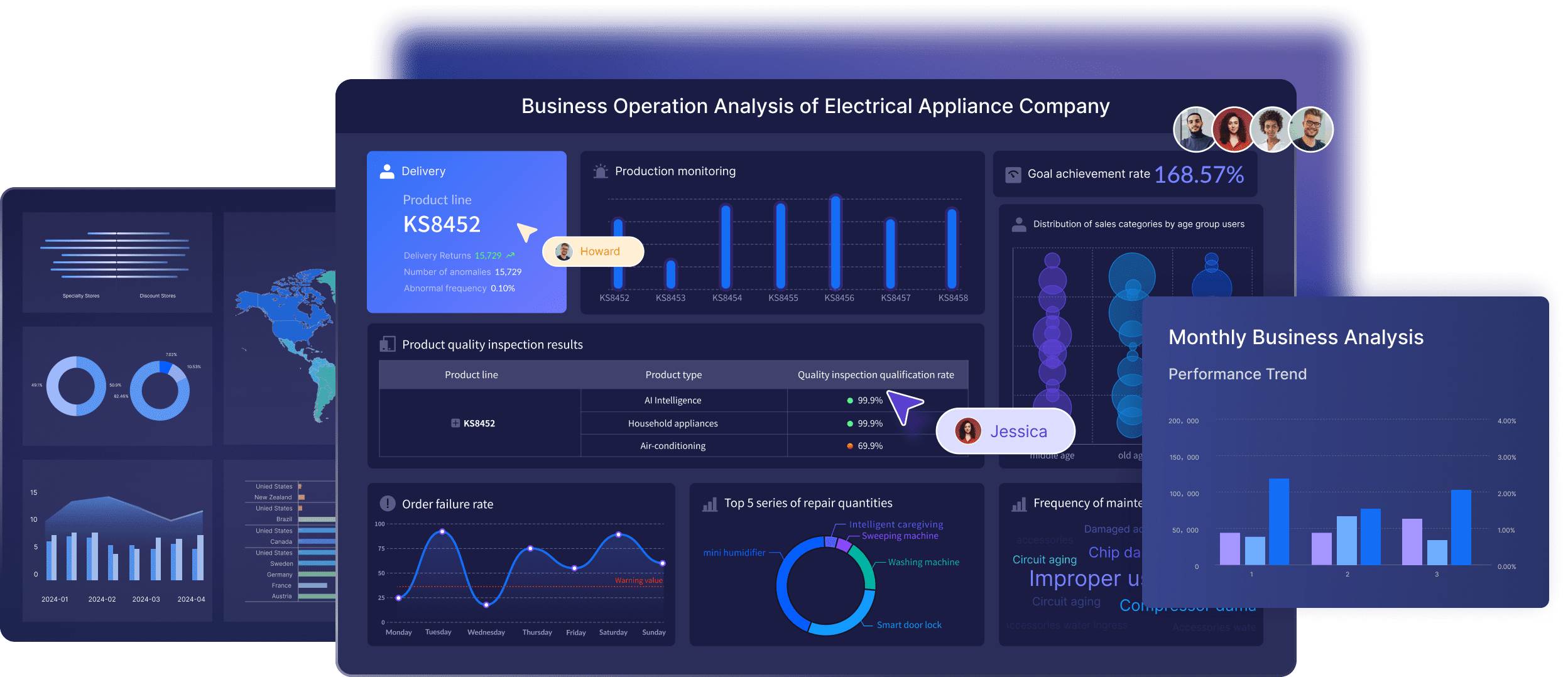
Tableau
Tableau is known for turning data into easy-to-read charts. It connects to spreadsheets and databases, making it very useful. You can create visualizations with its drag-and-drop feature. Tableau also shows real-time updates, helping you act fast. With Tableau, you can turn complex data into clear, helpful information.
| Evidence Description | Key Insights |
|---|---|
| Machine learning and AI find deeper insights in data. | These tools give smart tips and handle tough tasks easily. |
| Predictive analytics uses past data to guess future trends. | This helps small businesses work better and save time. |
| Better forecasting improves planning for demand and production. | It helps businesses adjust quickly to market changes. |
| Accurate data leads to smarter decisions. | This boosts efficiency and financial success for small businesses. |
Reporting and Visualization Tools
FineReport by FanRuan
FineReport helps you create detailed reports and dashboards. Its design is like Excel, so it’s easy to use. It combines data from different systems and automates report sharing. FineReport also has over 60 chart types to show data clearly. This tool saves time and reduces mistakes in reporting.
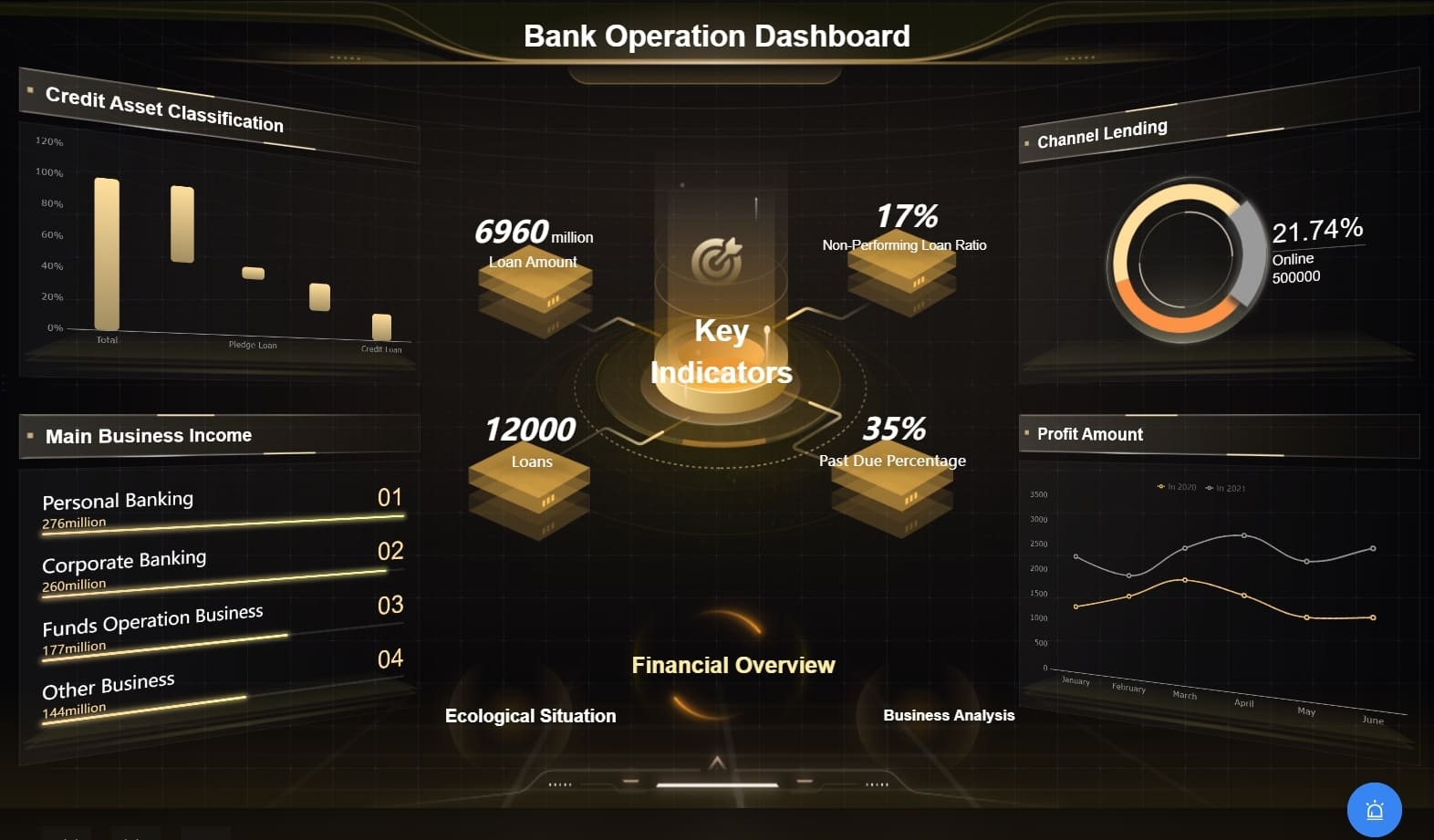
Power BI
Power BI is a flexible tool for creating reports and visuals. It connects to many data sources and updates in real-time. Its drag-and-drop feature makes building dashboards simple. Power BI also uses AI to give insights and predictions. It works well with other Microsoft tools, making it great for small businesses. With Power BI, you can track important numbers and make smart choices.
Tip: Use tools like FineReport and Power BI to show your data clearly. Good visuals help you see trends and act quickly.
Data Visualization and Storytelling Tools
FineReport by FanRuan
FineReport is great for making interactive and clear data visuals. It has over 60 chart types, including cool 3D ones. You can drag and drop to create dashboards without coding. This makes it easy for anyone to use, even beginners.
You can try it out in the FineReport demo model below:
FineReport shows real-time data, helping you decide quickly. Its design works well on phones, tablets, or big screens. You can also control presentations remotely, which is handy for meetings.
This tool works well in industries like factories, healthcare, and shipping. For example, factories can track production live. Hospitals can use it to see patient data and improve care. FineReport turns raw data into stories that inspire action.

Google Data Studio
Google Data Studio makes data visuals simple by linking to tools like Google Analytics and Sheets. You can create reports and dashboards that are easy to share. Its design is user-friendly, so even beginners can start quickly.
A key feature is its connection with other Google tools. If you use Google Ads or Drive, it fits right in. Teams can work together live, keeping everyone updated.
Google Data Studio helps small businesses track important numbers. For example, you can check website visits, sales, or ad results. Its charts and graphs make hard data easy to understand. This tool helps you make smart choices to grow your business.
Tip: Use FineReport for detailed storytelling and Google Data Studio for quick teamwork. Together, they make data easy and useful.
How to Choose the Right Business Tools for Small Businesses
Understanding Your Business Needs
Picking the right tools starts with knowing your needs. Every small business faces different problems, so figure out what you need to fix. For example, if keeping customers happy is key, a CRM tool like Salesforce could work best. If teamwork is your focus, try tools like Slack or Microsoft Teams.
To find what fits, use methods that match tools to your goals. Here’s a table to guide you:
| Framework Name | Description |
|---|---|
| Jobs to Be Done Framework | Understands what job a product is meant to do. |
| Value Stick Framework | Shows a product’s value based on what people will pay. |
| Job Design Optimization Tool | Free tool for improving job roles, made by HBS Professor Robert Simons. |
| Disruptive Innovation Framework | Explains how small companies can compete with big ones through new ideas. |
| Balanced Scorecard | Tracks non-financial goals, created by HBS Professors Kaplan and Norton. |
These methods help you pick tools that meet your goals and show clear results.
Tip: Write down your top three problems. Then, find tools that solve them.
Thinking About Your Budget

Your budget matters when choosing tools. Small businesses often have limited money, so affordable options are important. Start by deciding how much you can spend without overspending. Look for tools with free trials or plans that grow with your business.
Remember, the cheapest tool isn’t always the smartest choice. Think about the long-term benefits. For example, AI tools may cost more upfront but save time and money later. Tools like QuickBooks or Xero can handle accounting tasks, giving you more time for other work.
Note: Compare features of different tools to get the most for your money.
Growth and Compatibility
Choose tools that grow with your business. A tool for five people might not work for 20. Also, make sure tools connect with what you already use. This saves time and avoids mistakes.
Here are ways to check if a tool fits your needs:
- Time Savings: See how much time the tool saves daily.
- Cost Reduction: Check if it lowers your expenses.
- Productivity Boost: Compare team work before and after using it.
- Customer Feedback: Look for better customer reviews.
- Employee Opinions: Ask your team if the tool helps them work better.
For instance, FineDataLink by FanRuan connects data sources and grows with your business. It keeps things running smoothly as your needs change.
Tip: Pick tools that work with what you already use, like Google Workspace or Microsoft Office, to avoid problems.
Easy to Use and Helpful Support
Picking tools that are easy to use is very important. Simple tools save time and prevent confusion. You should choose tools that don’t need a lot of training. Clear designs let you focus on work instead of learning the tool. For example, drag-and-drop features or simple menus can make daily tasks easier.
Having good support is just as important. Even great tools can have problems sometimes. Quick help from support teams can fix issues fast. Look for tools with live chat, email, or phone support. Guides and training videos also help you solve small problems on your own. These resources save time and keep things running smoothly.

Small businesses often have fewer resources. Tools that are easy to use and have strong support can save time and money. Tutorials or FAQs can help your team learn faster. This means they can start using the tool right away. Tools with helpful support teams can also fix problems quickly, reducing delays.
AI tools are becoming more popular in business. These tools often include smart features like automatic fixes or tips. AI assistants can guide you through setup or suggest useful features. This makes tools even easier to use and improves your experience.
When choosing tools, try them out first. Many tools offer free trials or demos. Use these to see how well they fit your needs. Check how fast you can finish tasks and if the design is simple to use. Also, ask your team for their thoughts. Their feedback can help you pick a tool that works for everyone.
Using the right tools in 2025 can change your work. These tools save time, lower costs, and help businesses grow. They make tasks easier and improve decisions. For example, AI project tools cut delivery times by 40% and boost productivity by 50%.
| Problem | Tool Used | Outcome |
|---|---|---|
| Finishing projects on time with good quality | Used a smart project management tool | 40% faster project delivery and 75% better teamwork |
| Handling mobile teams with old systems | Added a Mobile Workforce Management tool | Happier customers and lower running costs |
| Projects costing too much and missing deadlines | Used an AI project management tool | 40% faster delivery and 50% higher productivity |
The right tools help teams do better work. They give useful insights and meet customer needs. A Microsoft study says 72% of customers want businesses to know their past and preferences. Tools like CRM and payroll software make this happen, improving service.
Think about your needs and pick tools that match your goals. Start small, but aim for big results. The right tools now can lead to long-term success.
Click the banner below to try FineBI for free and empower your enterprise to transform data into productivity!
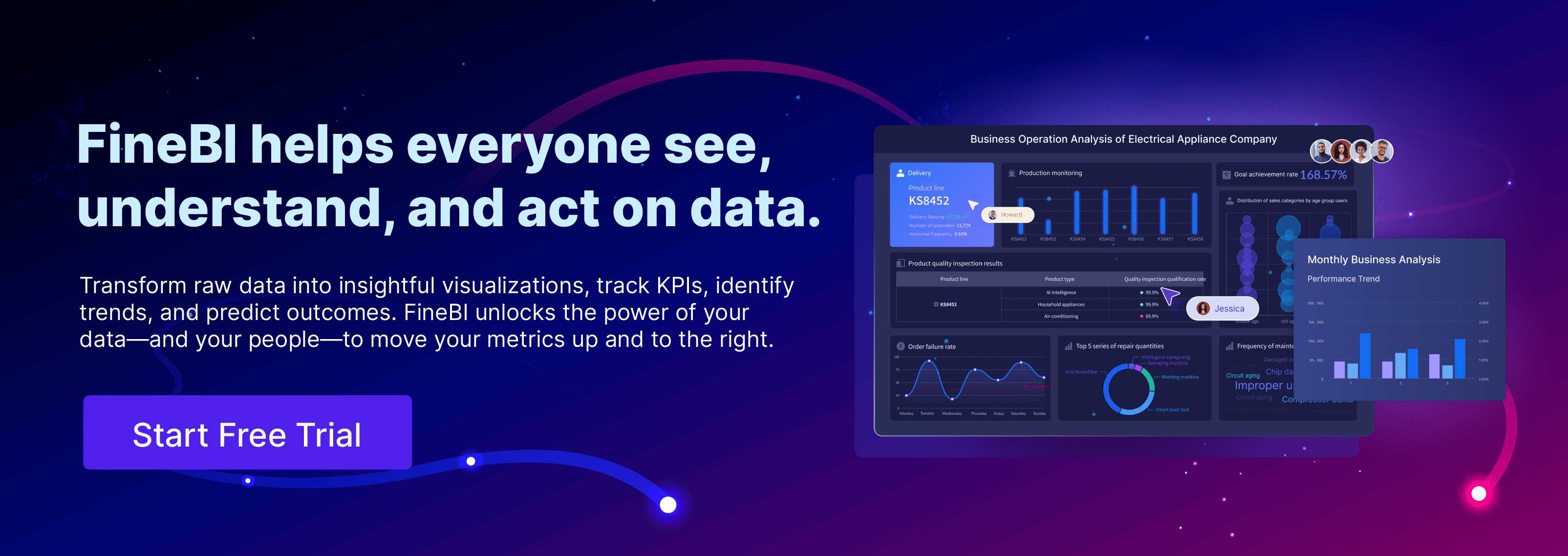
Continue Reading About Data Analysis
How to Fix Data Analysis Excel Not Showing in 2025
What is SaaS Analytics and Why Businesses Need It
Top Beginner-Friendly Data Analysis Projects to Build Your Portfolio
Data Analysis vs Data Analytics: What’s the Real Difference?
FAQ

The Author
Lewis
Senior Data Analyst at FanRuan
Related Articles

Understanding the Work of a Data Quality Analyst
A data quality analyst ensures data accuracy, consistency, and reliability by identifying, resolving, and monitoring data quality issues for business success.
Lewis
Nov 17, 2025

How Can Employee Retention Software Help Lower Turnover Rate
Employee retention software lowers turnover by tracking engagement, identifying risks, and supporting recognition to keep employees satisfied and loyal.
Lewis
Nov 16, 2025

What is Retention and Why It Matters Across Different Fields
What is retention? It means keeping customers, employees, or knowledge over time—a key metric for loyalty, value, and success in any field.
Lewis
Nov 16, 2025



